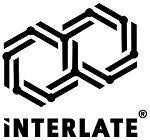As a plant engineer, technical leader, process manager or concentrate marketer/trader, have you ever:
- Wondered whether your target concentrate product grade for the current shift is economically optimised to maximise revenue or profit?
- Wondered whether your operational targets, including concentrate product grade, throughput and grind size should be adjusted dynamically based on what is being fed to the plant now?
- Been interested to know whether you should adjust individual circuit concentrates to different target product grades to better overall economic performance?
- Struggled with having data-driven, economical discussions between marketing, technical and operational teams to create the best possible product for your customers?
Throughout Interlate’s history, we have frequently observed the following opportunities:
- Bottom line productivity loss in the order of 1% simply from holding onto product concentrate grade targets which do not match the current operating context or market opportunities
- Multi-product or polymetallic circuits are not optimised holistically, utilising equivalent metal unit recoveries or a whole plant financial KPI.
- Concentrate product grade targets which have been factored upwards to include an inefficient “risk margin” representing loss of value for overall value-chain
- Equivalent product grade targets across multiple parallel processing trains, despite in-house knowledge that the trains have unique performance historically
- Loss of accuracy and confidence over time in the underlying tools and process models used to make decisions regarding product quality.
Our solution
NSR is an easy-to-use analytical application enabling quick, optimised, data-driven decision making for setting product concentrate grade targets and related operational KPIs.
Our customers have used this process for concentrate grade setting, product grade optimisation and mill-to-market financial optimisation.
The software is powered by advanced process modelling. It can embed a standard, site-accepted recovery or production models (as in traditional NSR), or alternatively, embed a lightweight digital twin generator powered by modern machine learning and Interlate’s Galaxy library.
Given the dependency on creating a high-fidelity process model, the application allows for several standard model health metrics and performance evaluation visualisations common in the process modelling space.
Early versions of the application were originally designed from outcomes of frontline service delivery to our valued customers, and as a result, the tool is intended to foster improved collaboration and objective decision-making between marketing, operational and technical stakeholders responsible for product quality management.
The application allows for custom plant feed scenarios, and is designed to quickly answer questions such as “what if my feed grade drops by 10% relative to plan”.
The application also advises the user precisely what to do in terms of optimal product grade options. For concentrators and minerals processing plants with multiple product streams or blended products from parallel circuits, the tool can be configured to specific exact targets per circuit.
NSR is a quick high-value cousin to our predictive modelling and real-time plant optimisation solutions, allowing customers to quickly hone-in on the product grade-recovery trade-off problem.
How do you use NSR?
- Upload your data set containing all KPI’s, independent and dependent variables
- Define Primary and Secondary KPIs – e.g. financial return per product, metal units produced, metal recovery, etc.
- Identify the independent model variables that impact the outcome of the KPI’s, including metal prices, feed grades, throughputs, grinding product size, etc.
- Define any physical or engineering constraints in the plant.
- Select the modelling technique to simulate the plant performance, ranging from simple multivariate linear models through to popular machine learning algorithms. The application allows for lean, rapid evaluation of models to select the appropriate underlying algorithms.
- Build the model of the plant performance (in seconds) and understand the selected model’s strengths and weakness through the model evaluation toolkit. Model evaluation provides quick, standardised metrics of model quality and health.
- View the plant simulation utilising clear and easy to understand visualisations that can be shared with your team. The embedded visualisations allow users to quickly identify next operational targets and run alternative scenarios.
Interlate can help! From initial configuration and deployment, through to training and even real-time support, Interlate’s service backbone supports you with early usage and adoption.
Who uses it?
- Plant process engineers
- metallurgists
- frontline operational and technical leaders
- marketing professionals
- concentrate traders
- domain focused data scientists
What plant assets is the software applicable to?
- Our service teams have successfully used the tool on base metals and precious metals concentrators.
- The tool can also be applied to coal handling and preparation plants.
- Future versions of the software will expand into iron ore
What are our related software solutions?
- Digital Twin Generator to enable predictive modelling
- Real-Time Plant Optimiser
- Galaxy API, Interlate’s complete data science and domain library
- Measure Table Engine allowing input data aggregation
What are some example opportunities identified?
1.2% in additional full plant Cu recovery through product grade alterations across multiple circuits.
1.8% in additional full plant Au recovery through product grade alterations.
How is the application deployed?
Let us know what will work for you. Interlate is happy to explore a range of deployment options, including:
-
- Client-side cloud deployment, where the application can be used on-demand within your own enterprise network by your selected end-users.
- Interlate private Cloud deployment, where the application and associated data are hosted in a secure Cloud environment, accessible to your selected end-users.
- Interlate on-premise deployment, where the application is hosted within Interlate’s own on-premise data centre and remote access is provided to selected end-users.
Creating a sustainable future through enhanced productivity.
For more information, please contact us via the information on our profile.

